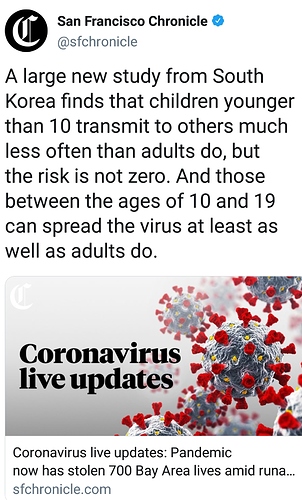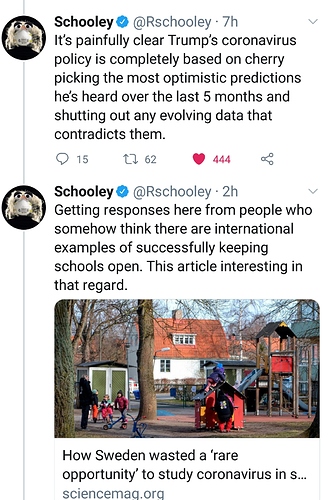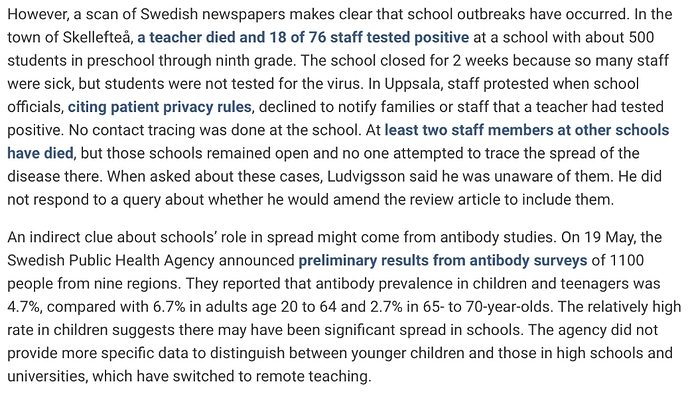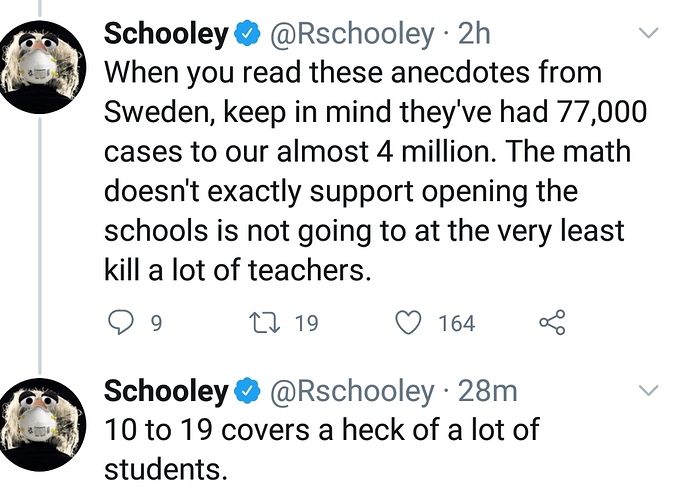The lengths to which Governor Hogan (R - MD) went to get Covid - 19 testing materials was a hero’s journey…and all the rebuttals he got from T and Pence…were petty and vindictive.
I’m a GOP governor. Why didn’t Trump help my state with coronavirus testing?
My wife, Yumi, and I stood on the tarmac, waiting in cloth masks, on the morning of April 18. Finally, a Boeing 777 landed and taxied to the far corner of Baltimore-Washington International Marshall Airport. It was the first Korean Air flight ever to land at BWI, but it didn’t have a single passenger aboard. The crew of five had flown 14 hours, straight from Seoul.
“Congratulations, honey,” I told Yumi as the pilot turned off the engines. “You helped save a lot of lives.”
The plane was filled with 500,000 test kits for my state, where the coronavirus had already infected 12,308 Marylanders and killed 463 of them. The numbers were still climbing, and we would never be able to contain them without mass testing. “Anybody that wants a test can get a test,” President Trump had declared the previous month. In reality, only 2,252 Americans had been tested at that point in March. Across the country, my fellow governors were desperately pleading for help on testing. But in early April, Trump said it was the states’ job.
Yumi was born and raised in South Korea, a country that had, by then, erected a well-coordinated testing regime. So, with nowhere else to turn, Yumi and I asked President Moon Jae-in for help. He arranged the sale of a half-million test kits from LabGenomics, one of the world’s leading medical testing firms, for $9 million. It was a bargain considering the $2.8 billion in revenue we projected the pandemic would cost Maryland.
Now the kits had arrived. The crew members came down together, walked over and stopped six feet away. Yumi bowed, and the crew bowed in return. Following their lead, so did I. Then a caravan of Maryland National Guard trucks escorted by the Maryland State Police drove the tests from the airport to a refrigerated, secure warehouse at an undisclosed location. The federal government had recently seized 3 million N95 masks purchased by Massachusetts Gov. Charlie Baker. We weren’t going to let Washington stop us from helping Marylanders.
This should not have been necessary. I’d watched as the president downplayed the outbreak’s severity and as the White House failed to issue public warnings, draw up a 50-state strategy, or dispatch medical gear or lifesaving ventilators from the national stockpile to American hospitals. Eventually, it was clear that waiting around for the president to run the nation’s response was hopeless; if we delayed any longer, we’d be condemning more of our citizens to suffering and death. So every governor went their own way, which is how the United States ended up with such a patchwork response. I did the best I could for Maryland. Here’s what we saw and heard from Washington along the way.
Trump’s first public utterance about the coronavirus set the tone for everything that followed. He was in Davos, Switzerland, on Jan. 22, after the first American diagnosis. “Are there worries about a pandemic at this point?” asked CNBC anchor Joe Kernen.
“We have it totally under control,” Trump responded unhesitatingly. “It’s one person coming in from China, and we have it under control. It’s going to be just fine.” And off the president went for the next eight weeks. The rest of January and February were peppered with cheerful or sarcastic comments and tweets, minimizing the outbreak’s severity and the need for Americans to do much of anything.
Only days after his first dismissal, we got our first scare in Maryland. A traveler who’d been in China landed at BWI with sniffles, coughs and lung distress. The passenger tested negative, but we were already making decisions in the governor’s office about how we should react when the first positive cases arrived. “It won’t be long,” I assured our team.
So many nationwide actions could have been taken in those early days but weren’t. While other countries were racing ahead with well-coordinated testing regimes, the Trump administration bungled the effort. The test used by the federal Centers for Disease Control and Prevention early on was fraught with inaccuracies, and onerous regulations hindered the nation’s private labs. The resulting disorganization would delay mass testing for almost two months and leave the nation largely in the dark as the epidemic spread.
Meanwhile, instead of listening to his own public health experts, the president was talking and tweeting like a man more concerned about boosting the stock market or his reelection plans.
America’s governors took a different approach. In early February, we descended on Washington for the annual winter meeting of the National Governors Association. As chairman, I had worked closely with the staff for months assembling the agenda, including a private, governors-only briefing at our hotel, the Marriott Marquis, to address the growing viral threat. We brought in Anthony Fauci, the director of the National Institute of Allergy and Infectious Diseases, who was already widely admired but whose awesome knowledge and straight-talking style hadn’t yet made him a national rock star; CDC head Robert Redfield; Ken Cuccinelli, the acting deputy secretary of homeland security; Jay Butler, the CDC’s deputy director for infectious diseases; and Robert Kadlec, assistant secretary for preparedness and response at the Department of Health and Human Services.
They hit us with detailed presentations and the unfiltered truth, as well as it was known then. I remember hearing many dire claims: “This could be catastrophic. . . . The death toll could be significant. . . . Much more contagious than SARS. . . . Testing will be crucial. . . . You have to follow the science — that’s where the answers lie.”
It was jarring, the huge contrast between the experts’ warnings and the president’s public dismissals. Weren’t these the people the White House was consulting about the virus? What made the briefing even more chilling was its clear, factual tone. It was a harrowing warning of an imminent national threat, and we took it seriously — at least most of us did. It was enough to convince almost all the governors that this epidemic was going to be worse than most people realized.
During the retreat in D.C., the Republican Governors Association sponsored a private dinner with the president. Backstage beforehand, I said hello to him. We took a photo together. He was perfectly cordial, even though we’d criticized each other in the past. Then he came out and gave one of his unscripted rally speeches that seemed to go on at least an hour too long. I don’t remember him mentioning the virus, but he talked about how much he respected President Xi Jinping of China; how much he liked playing golf with his buddy “Shinzo,” Prime Minister Abe of Japan; how well he got along with North Korean dictator Kim Jong Un.
Then, the jarring part: Trump said he really didn’t like dealing with President Moon from South Korea. The South Koreans were “terrible people,” he said, and he didn’t know why the United States had been protecting them all these years. “They don’t pay us,” Trump complained.
Yumi was sitting there as the president hurled insults at her birthplace. I could tell she was hurt and upset. I know she wanted to walk out. But she sat there politely and silently.
T he next night, Saturday, Lee Soo-hyuck, the South Korean ambassador to the United States, hosted a reception at his official residence for all the governors and their spouses. Yumi had worked with the ambassador to plan the event. Moon delivered a video message, welcoming the governors and thanking them for Korea’s very special relationship with the United States.
Speaking in Korean with English subtitles, he said how proud he was of Yumi as the first Korean American first lady in the United States. Then he referred to me as the son-in-law of the Korean people. It meant a lot to us to hear him say that, though it would take a couple of months before we would learn just how much his warmth would truly mean to the people of my state.
In the days and weeks that followed, as the coronavirus hit Maryland, we worked frantically, issuing executive orders, holding news conferences, calling other governors and federal infectious-disease experts, talking to local officeholders, strategizing with my senior staff — and constantly sanitizing our hands.
But the president was all over the place. He avowed, falsely, that “anybody” could get a test, even as my fellow governors were desperately pleading for help on testing. Then he shifted from boasting to blame. “We inherited a very obsolete system” from the Obama administration, he claimed, conveniently ignoring the fact that his own CDC had designed the troubled U.S. testing system and that his own Food and Drug Administration had waited a full month before allowing U.S. hospital labs to develop their own tests. On March 25, the president was back to bragging again. “We now are doing more testing than anybody by far,” including South Korea, whose widespread testing program was being praised around the world. This was true in absolute numbers, since we are a much bigger country, but we’d tested far fewer per capita than the Koreans had — 1,048 tests per million people vs. South Korea’s 6,764 per million — and of course that was the only figure that mattered. During one White House briefing in late March, Trump said the issue had been dealt with. “I haven’t heard about testing for weeks,” the president insisted.
Really?
As Trump was making these comments, I was requesting his approval to conduct joint testing at the National Institutes of Health. I even called Francis Collins, the head of NIH, to make this request, but he stopped me before I could. Not to argue but to plead: “Actually, Governor,” he said, “I’m glad you called, because I was going to ask you for help.” At NIH headquarters, he explained, his people had the capacity to perform only 72 tests a day. “I don’t even have enough tests for my immune-compromised patients or for my staff,” he said. He wondered if I might prevail upon Johns Hopkins, whose Suburban Hospital is across the street from NIH, to do some testing for him.
I could only shake my head at that. The federal government — a much bigger and better-funded institution, with tens of thousands of scientists and physicians in the civil service — wanted my help! Governors always do the hard work, make the tough decisions and take the political heat. But an undertaking as large as a national testing program required Washington’s help. We expected something more than constant heckling from the man who was supposed to be our leader.
Trump soon disabused us of that expectation. On April 6, he declared that testing wasn’t Washington’s responsibility after all. “States can do their own testing,” he said. “We’re the federal government. We’re not supposed to stand on street corners doing testing.”
It was hopeless, waiting around for him. Governors were being told that we were on our own. It was sink or swim. And if I didn’t do something dramatic, we simply would not come close to having enough tests in Maryland.
Luckily, I had a special ally on my side: Yumi Hogan.
We’d all seen how South Korea, hard hit at first by the virus, conquered its outbreak with a swift program of social distancing, testing and contact tracing. Yumi was almost a celebrity in her home country. (I remembered the cheering people waiting on the sidewalk once outside our hotel in Seoul: “First lady! First lady!”) And hadn’t Moon recently called me a Korean son-in-law? Maybe the Koreans would be willing to help.
On Saturday, March 28, I asked Yumi to join me on a call with Ambassador Lee. We spoke about the special relationship between Maryland and Korea, and Yumi made a personal plea in Korean, asking for the nation’s help.
That request set in motion what we called Operation Enduring Friendship, 22 days of vetting, testing and negotiating an unprecedented set of protocols. Our scientists and doctors spoke to their scientists and doctors. Eight Maryland government agencies got involved, as did their counterparts in Korea. It took dozens and dozens of phone calls, night after night — sometimes it seemed like all night — working through language barriers and a 13-hour time difference.
Moon’s team helped to cut through miles of bureaucratic red tape and connected us directly with executives at LabGenomics, a molecular diagnostics company. We explained what we were trying to achieve in Maryland and how desperate our need was. The LabGenomics people seemed to understand.
The scramble eventually culminated in the arrival of those half-million tests. I could finally breathe a sigh of relief: We had the tools at least to learn the scope of the outbreak.
I thought we might get a congratulatory word from the president. Trump always had a taste for bold gestures — but, apparently, only for bold gestures he could claim. The president spent much of the following Monday’s White House briefing criticizing me and dismissing what we had done. “The governor from Maryland didn’t really understand” about testing, Trump grumbled. “The governor of Maryland could’ve called Mike Pence, could’ve saved a lot of money. . . . I don’t think he needed to go to South Korea. I think he needed to get a little knowledge.”
The president’s comments that day seemed to confuse test kits with testing labs, but whatever. It was a great day for Maryland.
Pence called me a few days later. We had a friendly and productive conversation on a range of topics related to Maryland and the National Governors Association. At the end of the call, I jokingly said: “By the way, the president said that instead of working with South Korea, I should have just called you to get tests. If I had known it was that easy, I could have saved a heck of a lot of effort!” He chuckled, but there wasn’t much else to say.
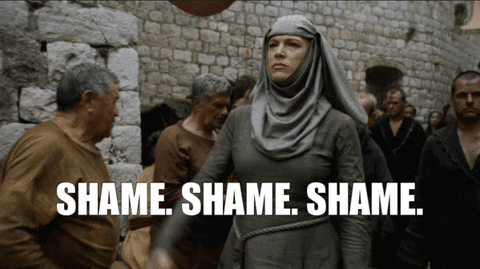

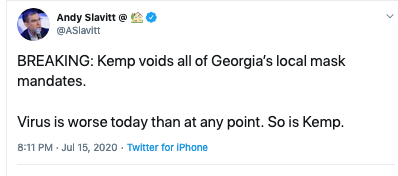
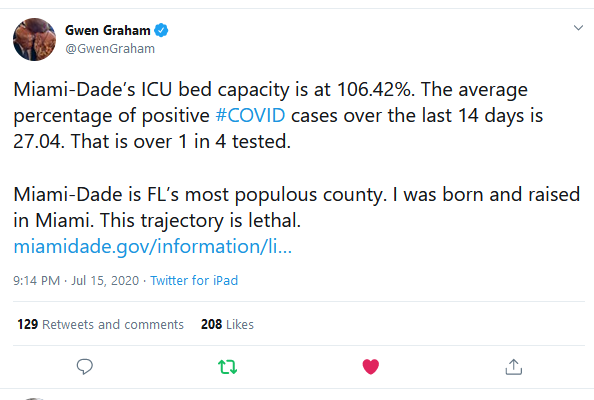
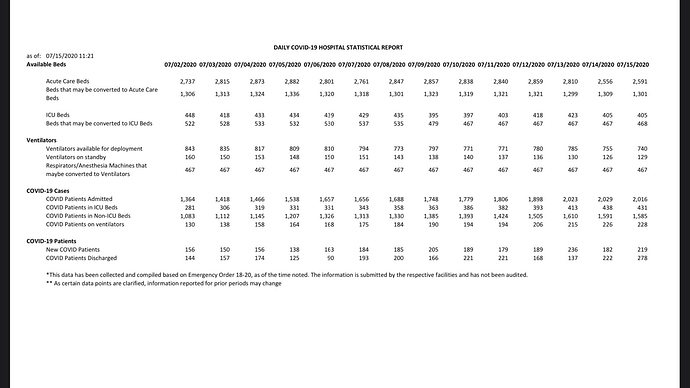
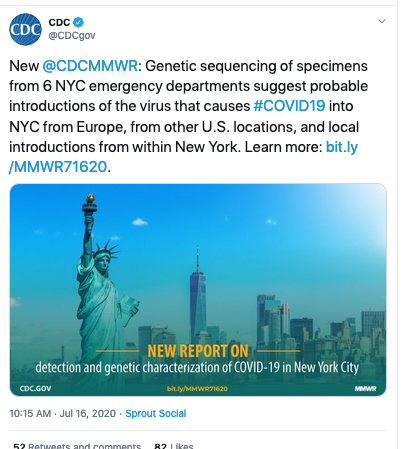



 from their WH responsibilities…RUNNING
from their WH responsibilities…RUNNING  AWAY from the problem and dumping it to the STATES.
AWAY from the problem and dumping it to the STATES.

